Newport Ship Workshop
12 June 2017
Recently, four conservation students from Cardiff and three students from the University of Wales Trinity St. David (UWTSD) program in Nautical Archaeology met at the Newport Ship Centre to conduct a collections assessment under the supervision of Cardiff lecturer Eric Nordgren and ship curator Toby Jones. The aim of the three-day workshop was to assess the condition of artefacts from the ship, repackage them if necessary, and make sure the database is up to date.
The Newport Medieval Ship, currently housed in a warehouse in Newport, was discovered in 2002 in the bank of the River Usk during excavations for a new building. Archaeologists soon uncovered what is now the most complete example of a 15th century merchant ship. Due to the favourable burial conditions, the timbers of the medieval ship were so robust that the excavation team could walk on them while they worked. The excellent state of preservation also allowed for dendrochronology to be done, dating the construction of the ship to about 1450. Analysis of artefacts from the ship suggests that it met its demise between 1468 and 1470 – researchers believe that the ship came into Newport for repairs, but the cradle that was being used to support the ship during the work collapsed, causing the ship to tip over and take on enough water that it could not be recovered. However, since the ship was in an inlet of a tidal river, it was still accessible enough that most things of value, including masts, sails, rigging and timbers, were stripped for reuse. The rest of the ship was eventually covered with alluvium, creating an anaerobic environment that kept it intact for us to study today.
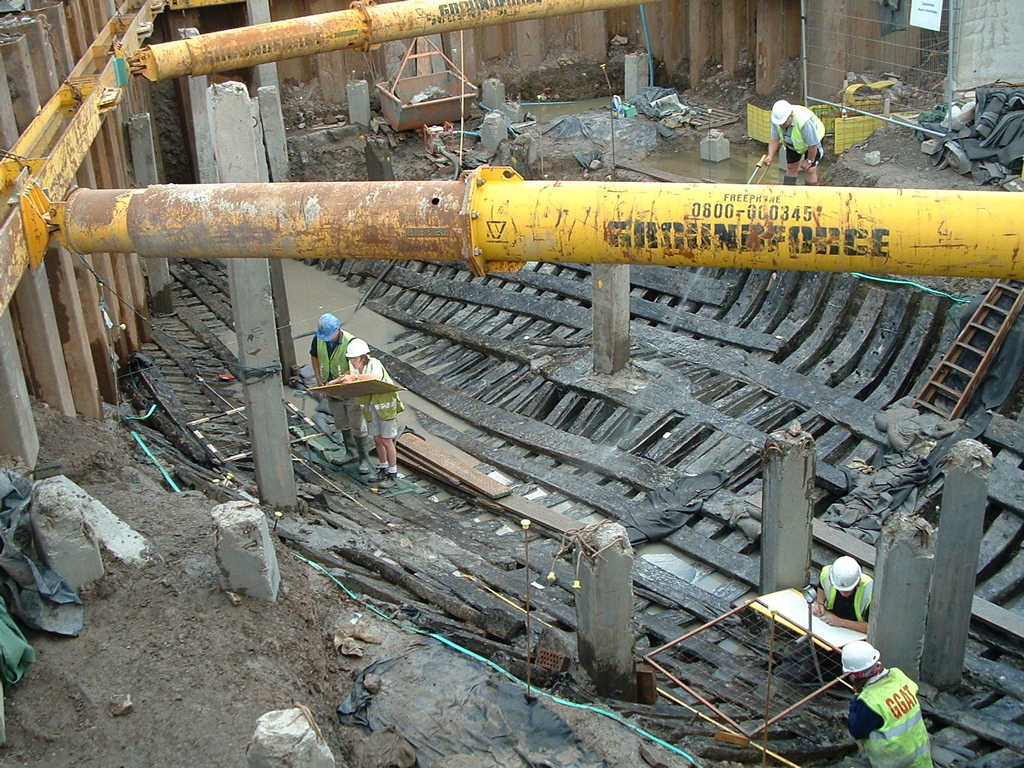
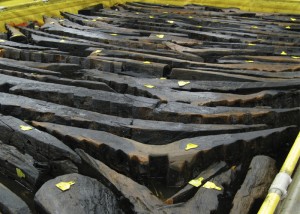
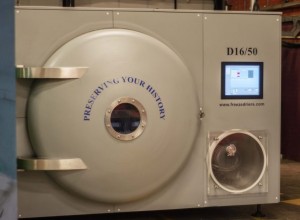
- Metals – the first day was primarily devoted to assessing metals, including a variety of iron nails and bolts, and copper coins. One of the highlights was opening a box and finding two pieces of gilt copper alloy helmet decorations, inscribed with Gothic letters. The items were checked for new corrosion or breakages, and repackaged with new silica gel, a desiccant used to keep the storage boxes dry.
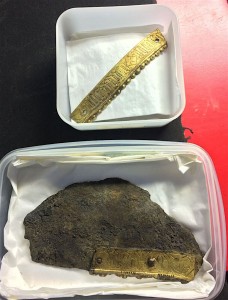
- Wood and leather – the second day was spent on organic objects. Many small wooden objects were found with the ship, including bowls, combs, tools, and components of a water pumping system. Leather objects, like shoes and straps, are susceptible to mould growth – several pieces had to be removed for further cleaning. Some pieces of basketry and textile were also assessed.

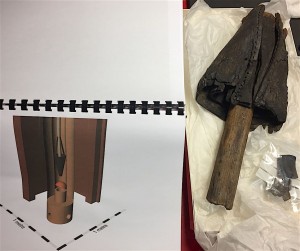
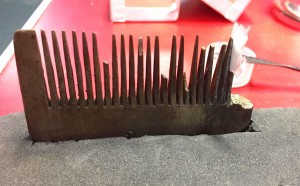
- Faro Arm – the third day was spent experimenting with the tool that was used to record every detail of every timber from the ship. The Faro Arm is used to trace features on an object to create a 3D rotatable image with sub-millimeter precision. This technology was a useful way to digitally reconstruct the ship; the files were also used to make 3D printed models. The Arm also has a laser scanning attachment. We all tried our hand at recording a piece of wood, and then laser-scanned a few objects brought from our lab.

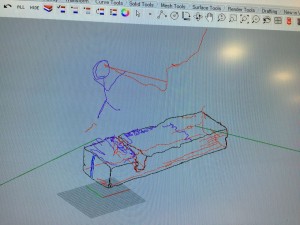

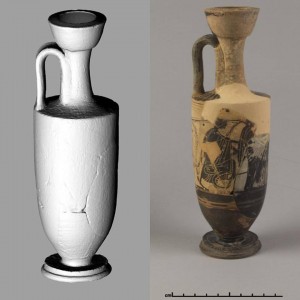
If you are interested in more of the details of the project and artefacts, visit the Archaeology Data Service, where you can download all of the specialist reports.
You can follow the Friends of the Newport Ship on Twitter and watch videos about the project on YouTube.
All photos taken by Aliza Taft and Kim Roche, except where noted. Dean Smith and Morgan Creed from Cardiff Conservation also participated in the workshop.
Comments
- March 2024 (1)
- December 2023 (1)
- November 2023 (2)
- March 2023 (2)
- January 2023 (6)
- November 2022 (1)
- October 2022 (1)
- June 2022 (6)
- January 2022 (8)
- March 2021 (2)
- January 2021 (3)
- June 2020 (1)
- May 2020 (1)
- April 2020 (1)
- March 2020 (4)
- February 2020 (3)
- January 2020 (5)
- November 2019 (1)
- October 2019 (1)
- June 2019 (1)
- April 2019 (2)
- March 2019 (1)
- January 2019 (1)
- August 2018 (2)
- July 2018 (5)
- June 2018 (2)
- May 2018 (3)
- March 2018 (1)
- February 2018 (3)
- January 2018 (1)
- December 2017 (1)
- October 2017 (4)
- September 2017 (1)
- August 2017 (2)
- July 2017 (1)
- June 2017 (3)
- May 2017 (1)
- March 2017 (2)
- February 2017 (1)
- January 2017 (5)
- December 2016 (2)
- November 2016 (2)
- June 2016 (1)
- March 2016 (1)
- December 2015 (1)
- July 2014 (1)
- February 2014 (1)
- January 2014 (4)
1 comment
Comments are closed.